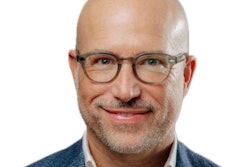
“That’s an increase of 2.9%, or about one million learners, within the last year,” said Dr. Doug Shapiro, research and executive director at the National Student Clearinghouse (NSC) Research Center, which gathers data on postsecondary institutions in the U.S.
These findings come from NSC’s latest “Some College, No Credential Outcomes: Annual Progress Report.” SCNC students are those who attended any portion of postsecondary education, but have stopped out for at least three consecutive semesters without being awarded a credential.
“The SCNC population has grown in every state except Alaska, which held steady. There was no state in which this population fell,” said Shapiro. “Among larger states with the highest SCNC growth rate are Arizona, Texas, Georgia, and Florida, which all had increases above 3.5%. Illinois and Michigan grew much less, by 1.2% and 1.8% respectively.”
The report’s conclusions urge institutions to find ways to engage this ever-growing population, particularly to help America achieve its 60% credential attainment goal for those between 25 and 64 years old by the year 2025. This goal has been set by the Lumina Foundation, a private foundation working to make higher education opportunities available for all. NSC chose to focus this SCNC report on those under age 65, specifically those who could potentially boost the workforce and the economy.
The good news, said Shapiro, is that “new stop outs fell slightly, and the number of re-enrollments of former SCNC students have increased by about 78,000 [students], just about reversing the decline of 80,000 we noted in last year’s report."
Those who returned to education overwhelmingly chose to return to public, two-year community colleges or primarily online institutions. About two-thirds of returning students chose a different institution than their original attendance, and many switched educational sectors entirely.
The report’s demographic breakdown continues to reveal persistent postsecondary racial and gender inequities. Men, Latinx, Black, and Native American students are disproportionately represented in the stop out, SCNC population, while white students and female students make up the majority of those who are able to return.
 Dr. Kaleb Briscoe, assistant professor of adult and higher education at the University of Oklahoma.
Dr. Kaleb Briscoe, assistant professor of adult and higher education at the University of Oklahoma.
“When we think about Latinx, Black, and Native American students, they are probably participating in a lot of these [DEI-led] activities and programs, things that have been dismantled in this moment,” said Briscoe. “[This legislation is] taking away everything put in place to serve them and help them succeed within these areas. If that staff member in financial aid or that person who was motivating them no longer exists, why would they show up?”
Briscoe said institutions need to “reassess how dismantling all these things are actively affecting recruitment and retention.”
“How are we supporting students in the midst of all these legislative bans? We need leaders to be brave in this moment and respond collectively,” said Briscoe. “All these programs have historically aided these populations — they matter. We need them. So, put money in them and fight for them."
The report also found that roughly 25% of returning students were able to receive a credential within their first year back. This suggests, said Shapiro, that these students were encountering other barriers to credentials, including fees or administrative holds.
“They may also have received reverse transfer award — students who may have stopped out of a bachelor’s degree some years ago were informed they’ve earned enough credits in that program to complete an associate’s degree,” said Shapiro. “These [students] are a challenge for higher education — it’s inefficiency in the system, and these are things colleges and universities can do a better job of facilitating, degrees that have been earned, but the student was unaware."
Briscoe agreed, adding that institutions need to be asking deep questions about how they are best serving their student populations, what tools they are using to engage, retain, and recruit non-traditional students. With the FAFSA delays likely to have an increased impact on SCNC numbers, Briscoe said, policymakers need to examine this data to write policies that will actually move the needle on achievement and equity.
“Adult learners and non-traditional students, what do they need to thrive? Are we catering our current curriculums to students within these populations, who have different perspectives on life, have endured a multitude of things, are we speaking their language within institutional structures?” asked Briscoe. “We need to reimagine what this looks like.”
Liann Herder can be reached at [email protected].















